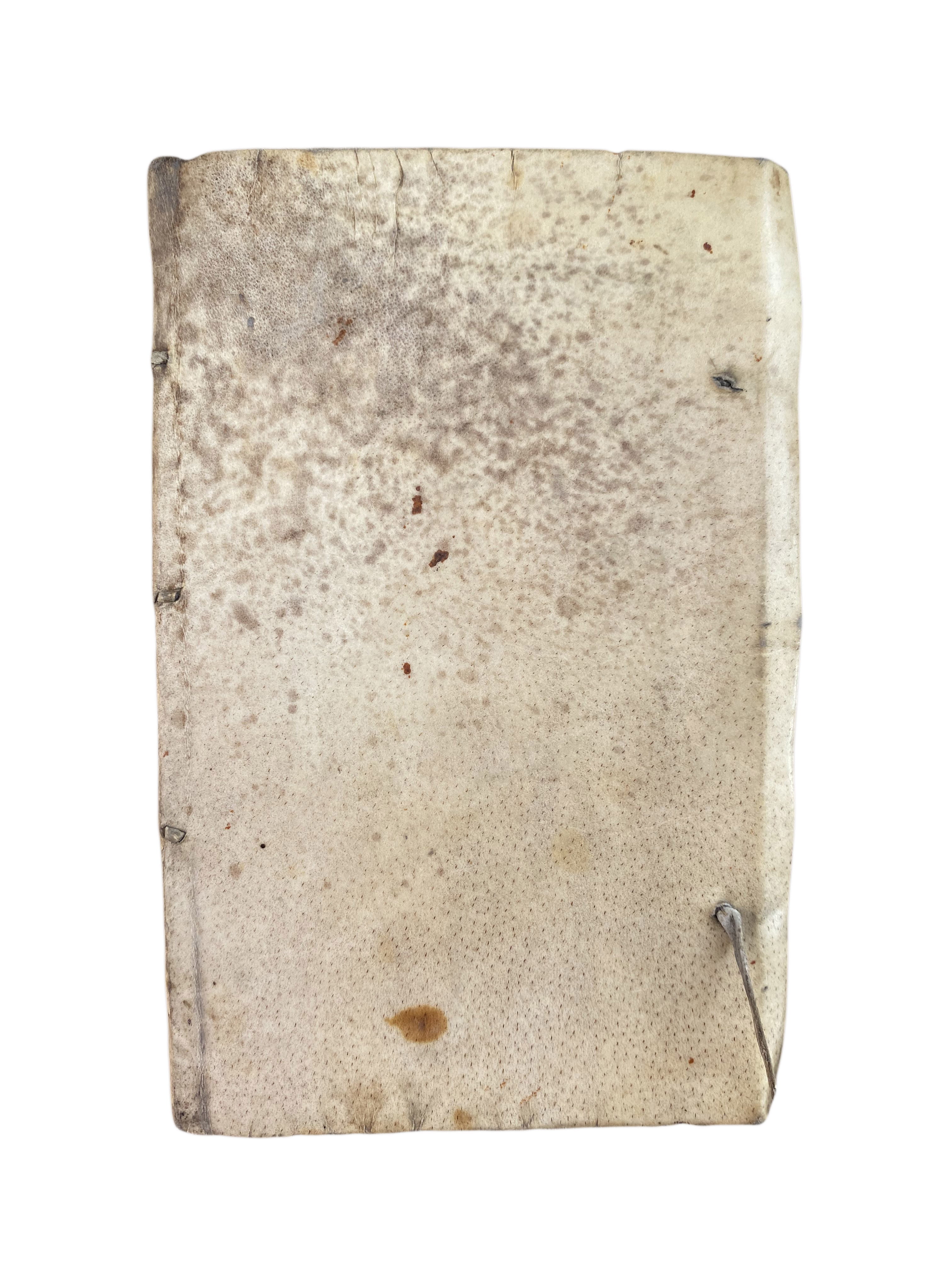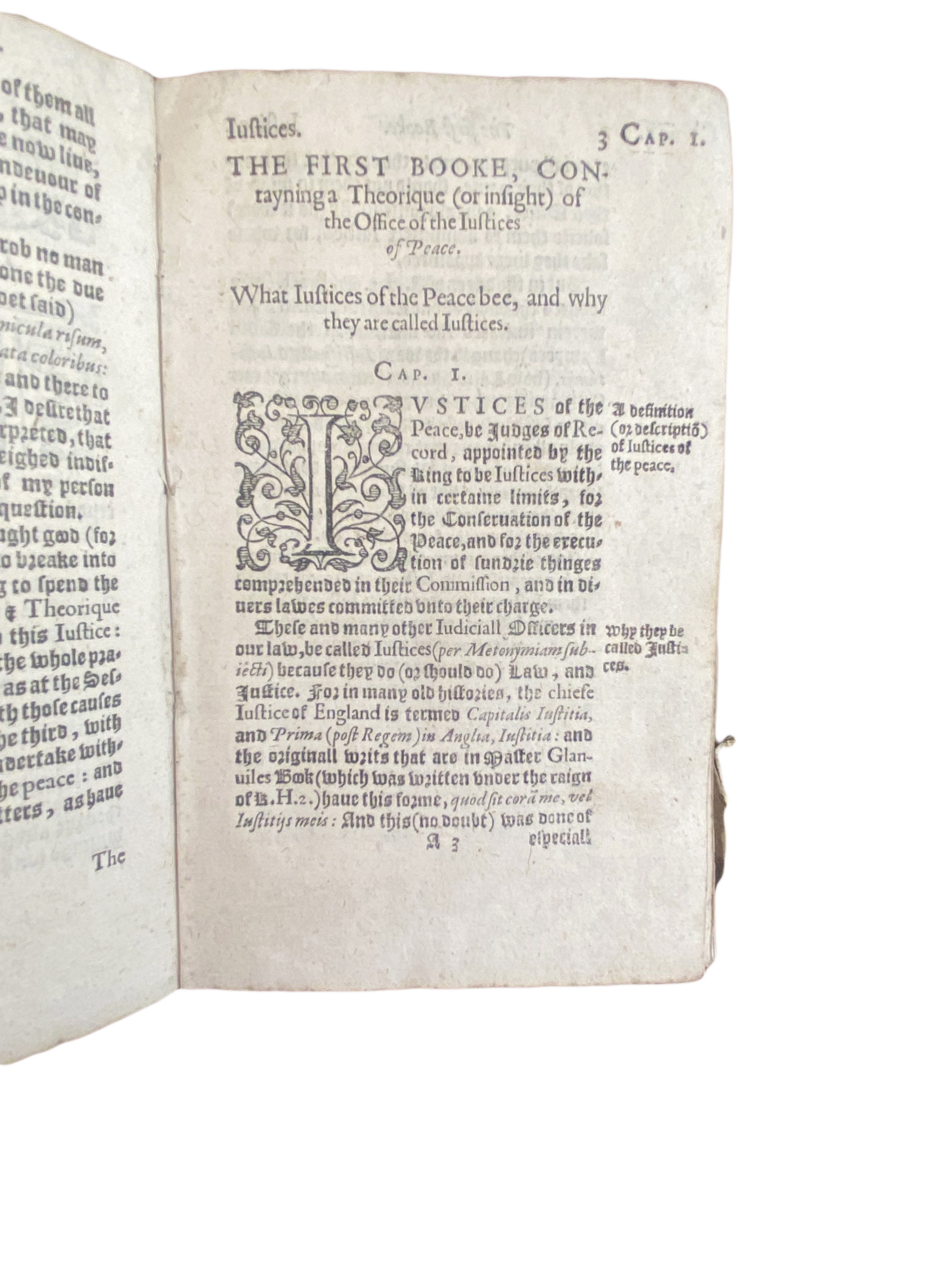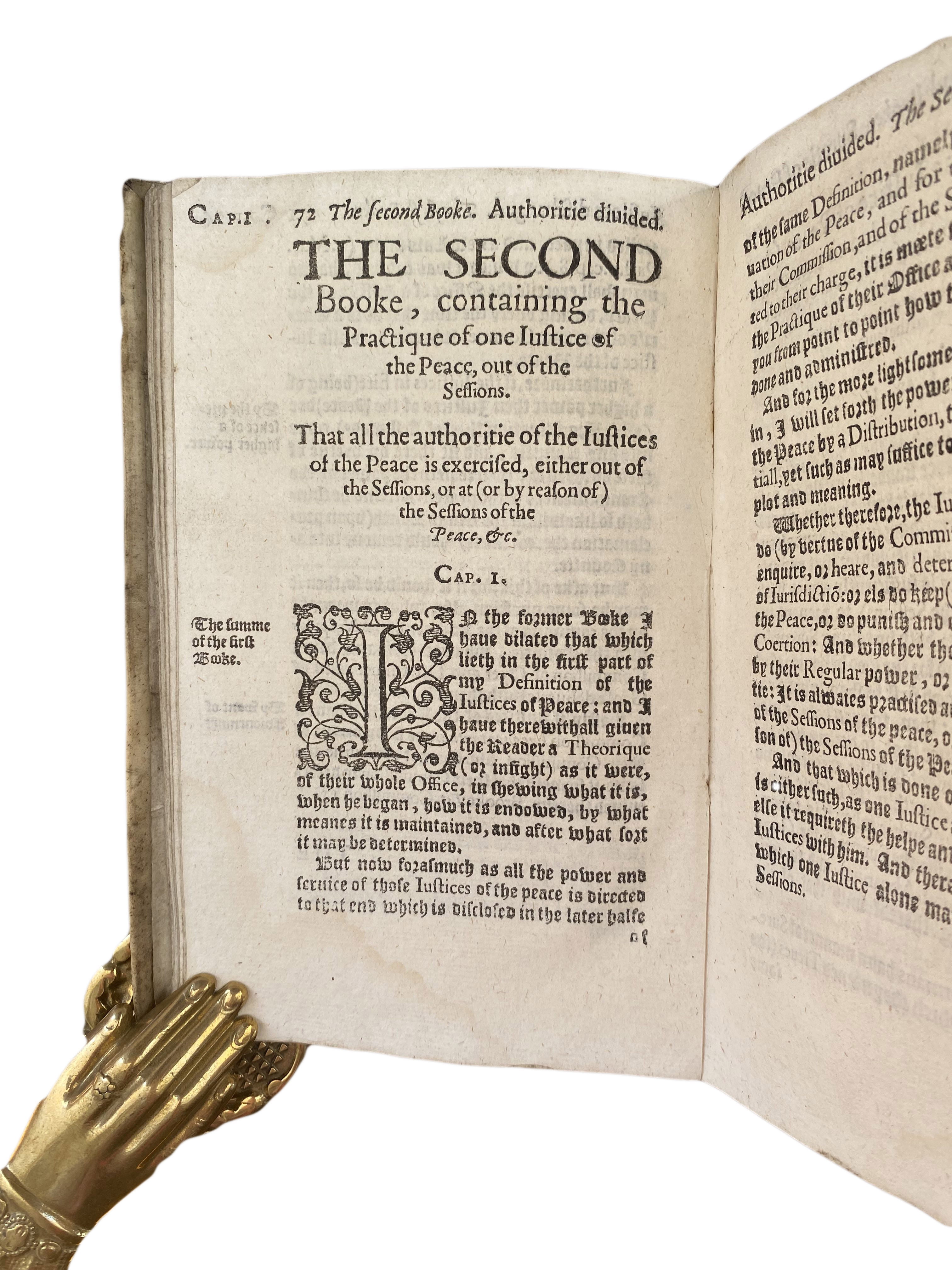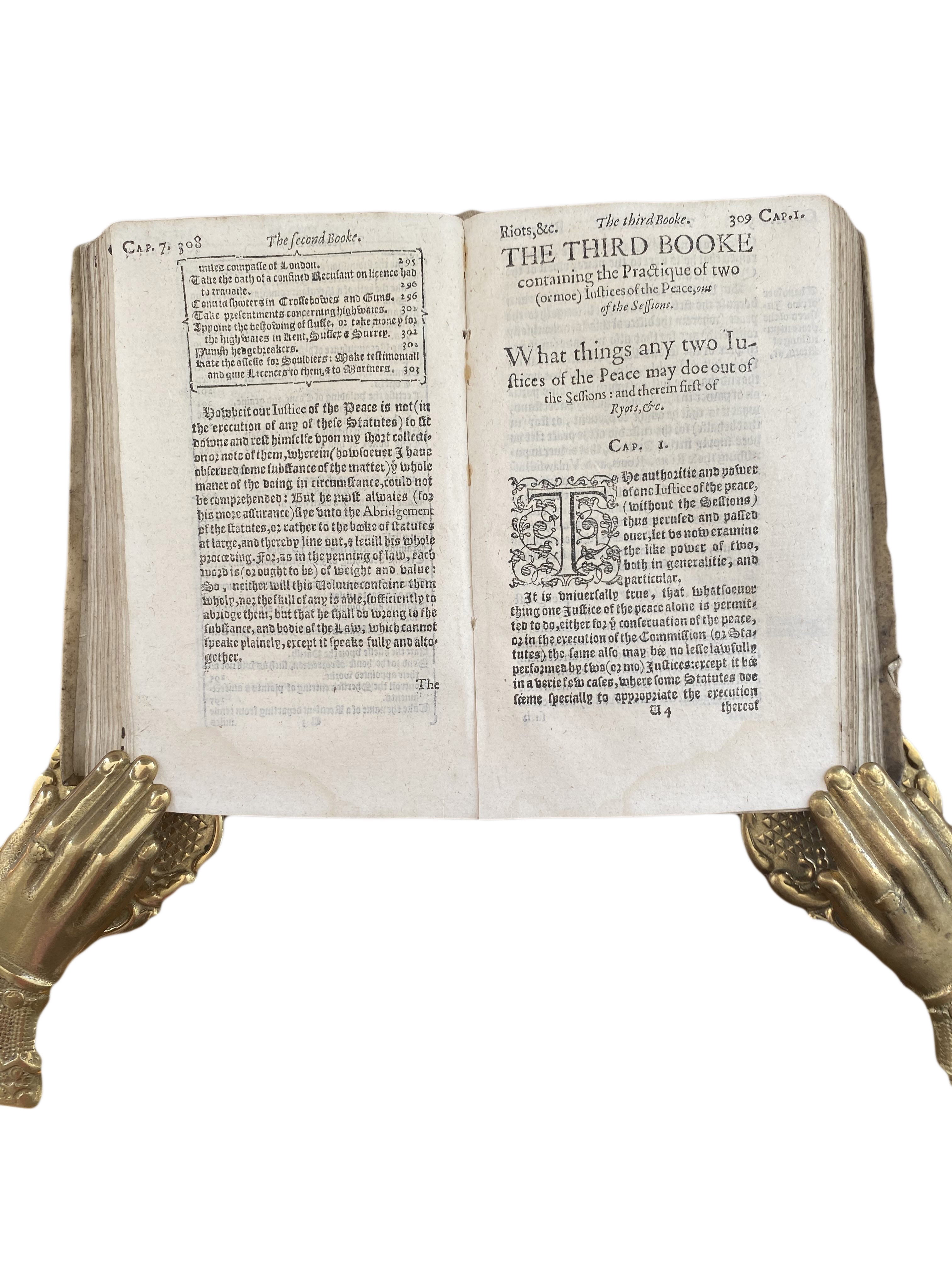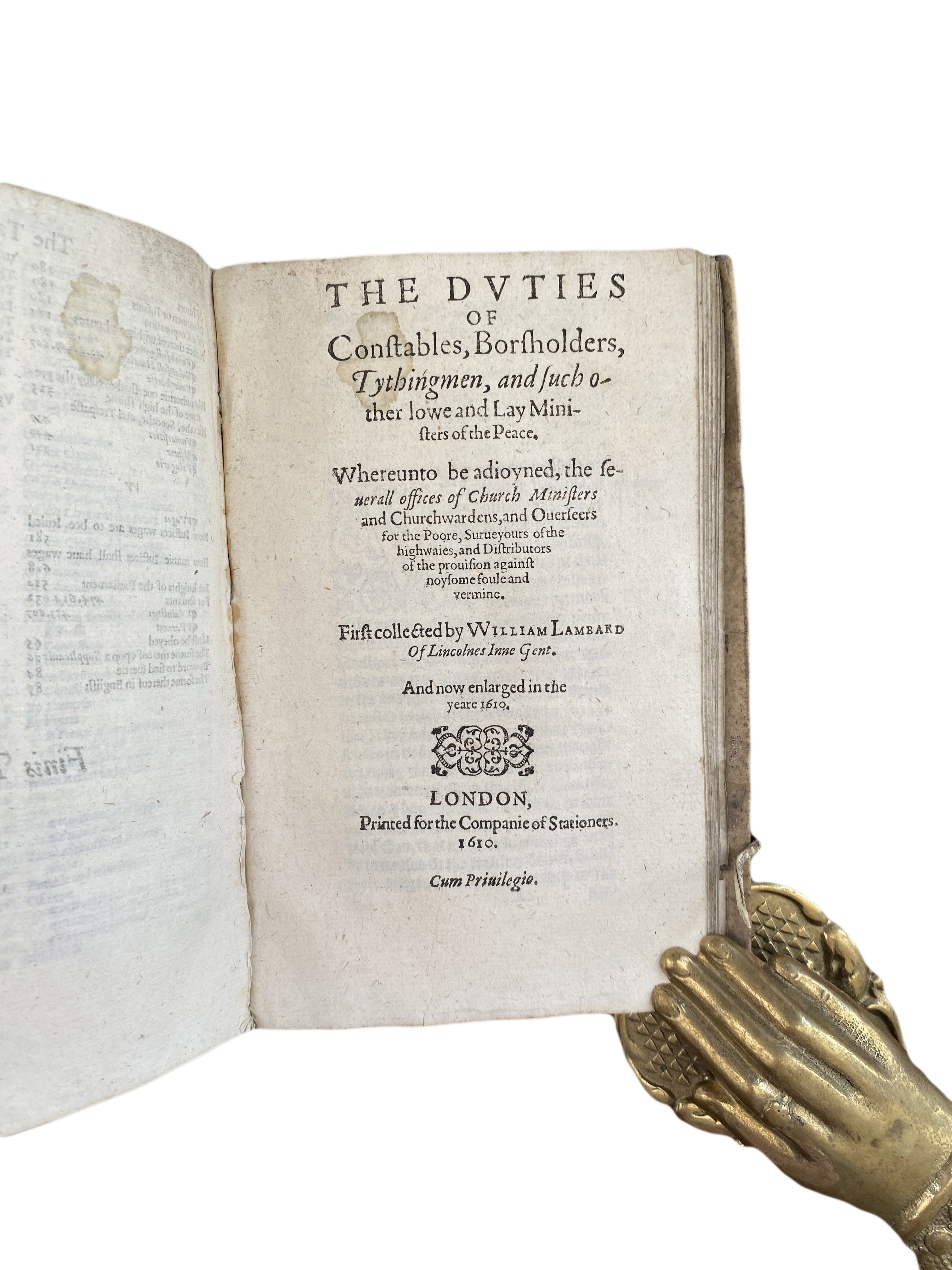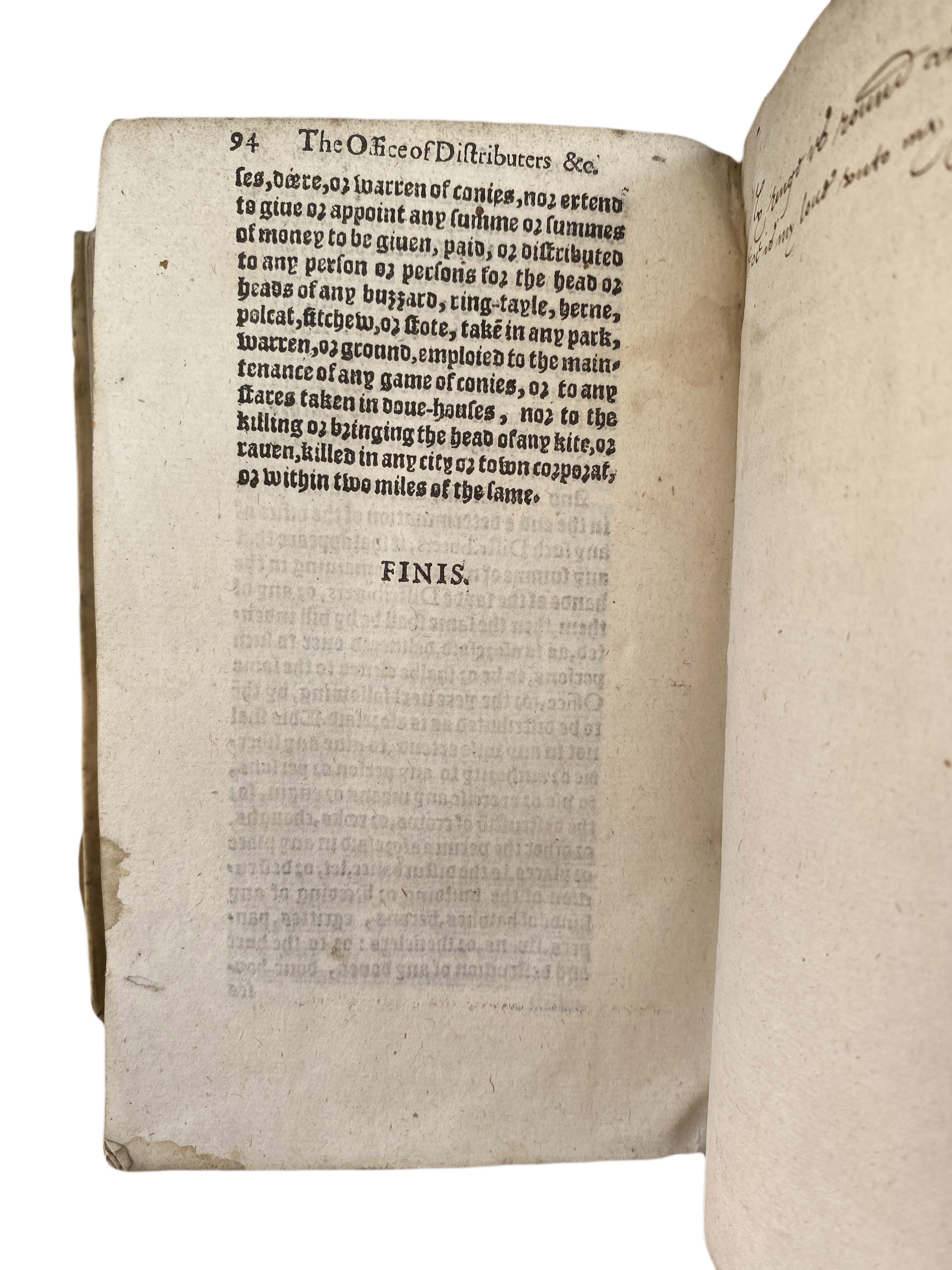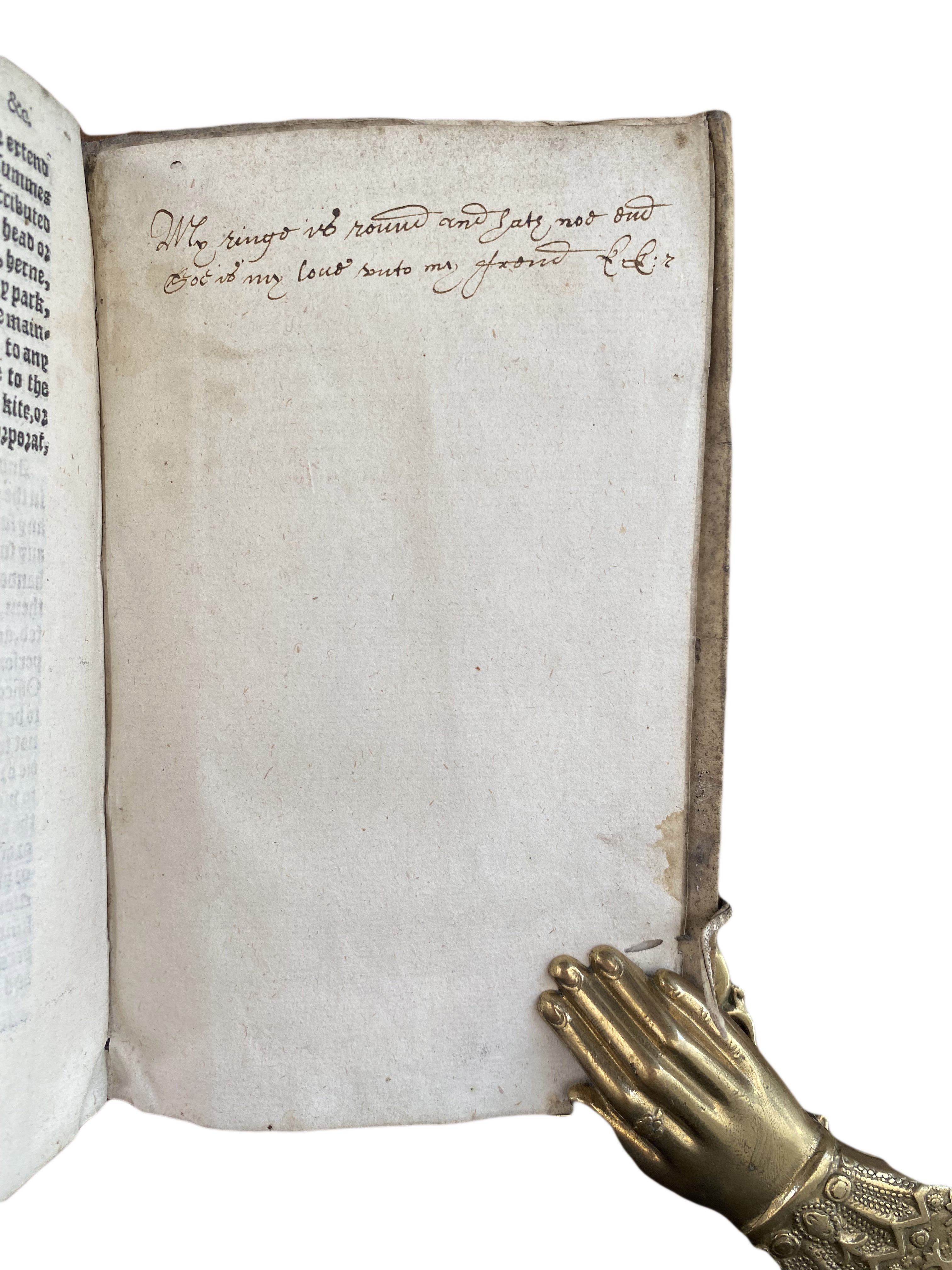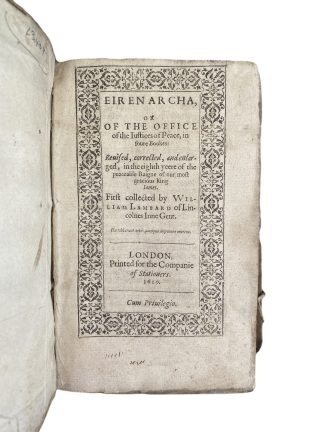LAMBARDE, William.
Eirenarcha, or Of the office of the iustices of peace, in foure bookes: reuised, corrected, and enlarged, (with) Duties of constables,
London, printed [by Adam Islip] for the Companie of Stationers, 1610£1,850.00
8vo. 2 vols. in one. 1) [ii], 634, [lxxxiv]. A-2Y⁸. 2) pp. 94, [iv]:A-F⁸. Black letter, some Roman and Italic. First title within typographical border, small woodcut ornament on second, floriated woodcut initials, woodcut headpieces, a short line of religious verse in a contemporary hand on paste down, repeated on last blanks. Light age yellowing, very minor light waters stains in places, the odd mark, a few side notes fractionally shaved. Very good copies, crisp and clean in contemporary limp vellum, a bit spotted, yapp edges, remains of ties.
Rare newly enlarged edition of Lambard’s “Eirenarcha”, first published in 1581, bound with its companion work on the Duties of Constables, also enlarged and updated. “Written in a clear and unaffected style this manual remained for a long time the standard authority; Judge Blackstone speaks favourably of this work, and recommends it to the perusal of students.” (DNB). The first Book of the Eirenarcha contains a “theorique (or insight) of the office of the Justices”; the second sets out the jurisdiction of and the practice and procedure before the justices of the peace, the third of the justices with the quarter sessions, the fourth of the quarter sessions alone. It is followed by a table containing (“verie neare all”) the printed statutes and a selection of precedents. A good enlarged edition of one of the sixteenth and seventeenth centuries best handbooks for practitioners in the courts of common law. “William Lambard’s Eirenarcha; or Of the Office of the Justices of Peace appeared in at least 13 editions between 1581 and 1619. Although Lambard’s title does not reference Fitzherbert, the manual’s prefatory epistle does. In his dedicatory epistle, Lambard informs Sir Thomas Bromley, Lord Chancellor of England, that when he first began writing his tract, he consulted earlier works, in particular Fitzherbert’s. Lambards manual, however, substantially amplifies Fitzherbert’s work, adding new material about the history of the office, clarifying the differing responsibilities of a single justice versus two or three, and providing procedures for the quarter sessions. Lambard does not include Fitzherbert’s sections on other local offices. In general, Lambard’s tract elevates the justice’s office, putting the “keeper of the peace” on a par with the monarch.” Christopher Cobb ‘Renaissance Papers 2009’. All good criminal law books tell the reader a great deal not just about the law but about the society that made them. Here there are detailed indictments i.a. for killing a man by witchcraft, bewitching a horse, for the rape of a child or maid (the age distinction was ten) and for keeping a bowling alley, hearing mass and for usury.
The second work, first published in 1582, is generally found as an addendum to Lambard’s Eirenarcha, a standard manual on the duties of Justices of the Peace, but in due course it became a much used text in its own right. In this edition the material has been extended, with additional paragraphs about, amongst others, churchwardens, surveyors of highways, those responsible for destroying “noisome foule & vermine”, and officials concerned with the poor and with prisons. William Lambard of Lincoln’s Inn was a prominent official of the Chancery bar, a learned lawyer and himself a justice of the peace.
In stock



